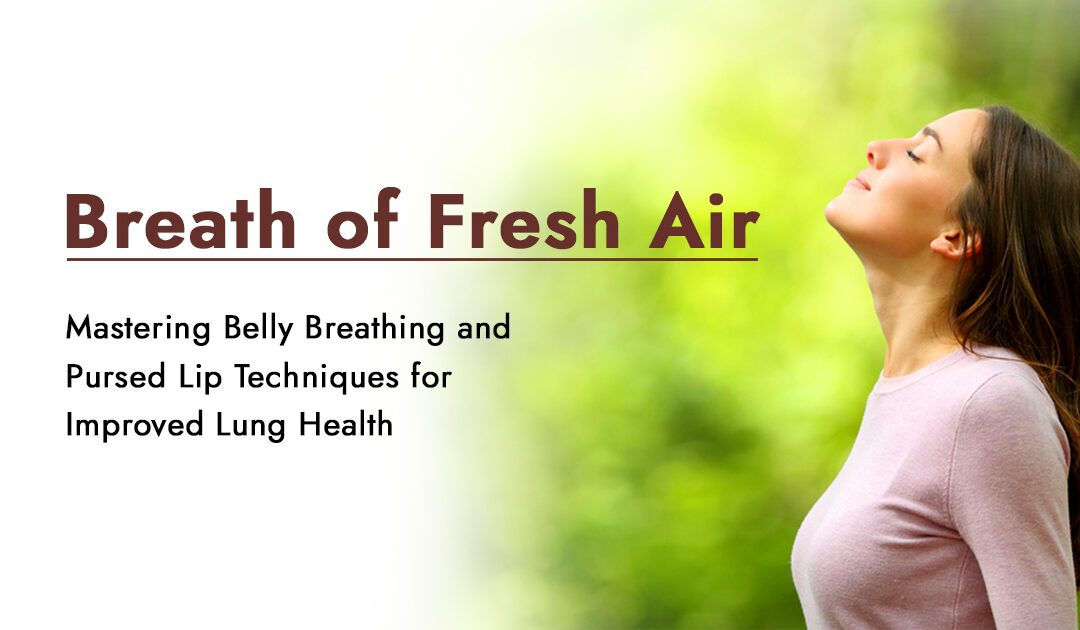Let the new, fresh air in and the old, stale air out! That’s the motto we’re adopting for better respiratory health. Proper breathing exercises can significantly enhance the efficiency of your lungs and overall respiratory health.
This blog post will discuss two essential breathing techniques—belly breathing and pursed lip breathing—that are taught to patients with respiratory issues in an effort to help them breathe more effectively.
What are these exercises?
Breathing from the belly: This technique involves deeply contracting and expanding your diaphragm, noticeable during the exercise. Begin by breathing in through your nose. Then, exhale through your mouth for at least two to three times as long as you inhale, keeping your shoulders and neck relaxed. This helps retrain your diaphragm to assist in efficiently filling and emptying your lungs.
Pursed lip breathing: This technique aids in keeping your airways open for a longer period and reduces the number of breaths you take, enhancing lung capacity. It allows you to engage in more physical activity as your lungs can hold and expel more air efficiently. To practice, inhale through your nose and exhale through your mouth with pursed lips in a controlled and steady manner, ensuring the exhalation lasts at least twice as long as the inhalation.
Why practice these exercises?
Healthy lungs naturally breathe easily. However, with conditions like COPD and asthma, our lungs become less flexible and harder to breathe over time. Stale air accumulates, making it difficult for the diaphragm to contract and draw in fresh oxygen. When the diaphragm isn’t functioning optimally, the body compensates by using muscles in the back, neck, and chest for breathing, leading to lower oxygen levels and reduced energy for activities. Regularly performing these exercises can help clear the lungs of accumulated stale air, increase oxygen levels, and improve the diaphragm’s function in aiding breathing.
Though these exercises appear simple, they require more skill to master than usual. Due to this, practice is key! Consistent practice is essential for mastering these techniques. By regularly engaging in these activities, individuals can improve their lung capacity, increase their oxygen intake, and enhance the diaphragm’s role in supporting healthy breathing.
Remember, persistence and patience are crucial in reaping the benefits of these challenging yet seemingly simple exercises. It’s also important to consult with healthcare professionals before starting these exercises, especially for those with pre-existing respiratory conditions.




